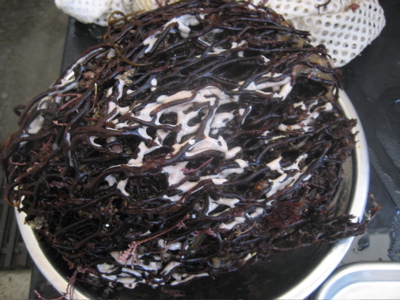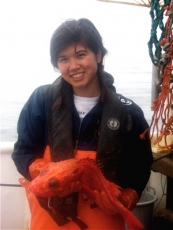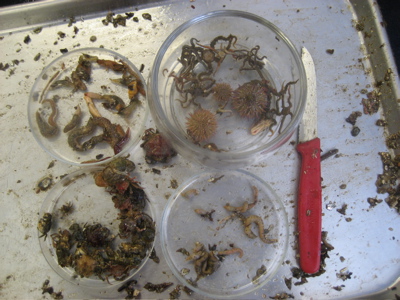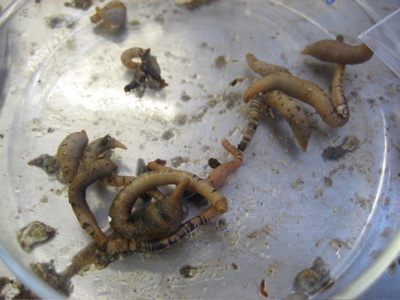
by Erin Loury, Ichthyology Lab

I got to play evil landlord the other day and evicted a bunch of little critters from their home (proving that even marine invertebrates are not immune to housing woes…). I was on the hunt for some specimens that might be prey items for the gopher rockfish, which I’m studying for my thesis. Someone suggested I seek out the creepy crawly snacks where they live – holed up in a kelp holdfast.

A holdfast keeps a towering kelp plant anchored firmly to the sea floor. It may look like a giant root ball, but its many fingers don’t suck up nutrients and water like true roots do in land plants. They do, apparently, make a great high-density high rise for little crabs, brittle stars, and more.
While hacking open the basketball-sized mass of slippery tubes, I expected to find maybe a dozen animals or so – but I tallied up some 85 residents! Crabs, brittle stars, polychaetes (worms), urchins, shrimp, you name it. I was so jazzed to dig up a handful of these little peanut worms (also called sipunculids). They have a long proboscis that they can actually turn inside out and tuck up inside themselves! And aren’t they just so fat and cute?

What do you think makes a holdfast such a great home? Post a comment and let us know what you think!

